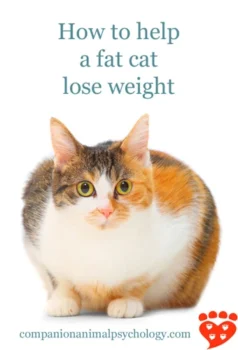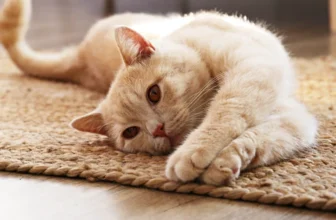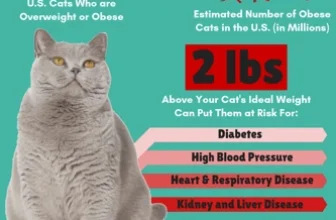It’s no secret that America has an obesity problem, but did you know that our pets are also struggling with weight issues? American Shorthairs, beloved feline companions, are particularly susceptible to obesity. As doting cat guardians, it’s our responsibility to ensure our furry friends stay healthy and happy. The good news is that with a few lifestyle changes and some dedication, you can help your American Shorthair reach and maintain a healthy weight. In this ultimate guide, we’ll explore the risks of cat obesity and the benefits of weight loss, as well as practical tips and long-term strategies for keeping your American Shorthair healthy.
Why is it important to keep your American Shorthair at a healthy weight?
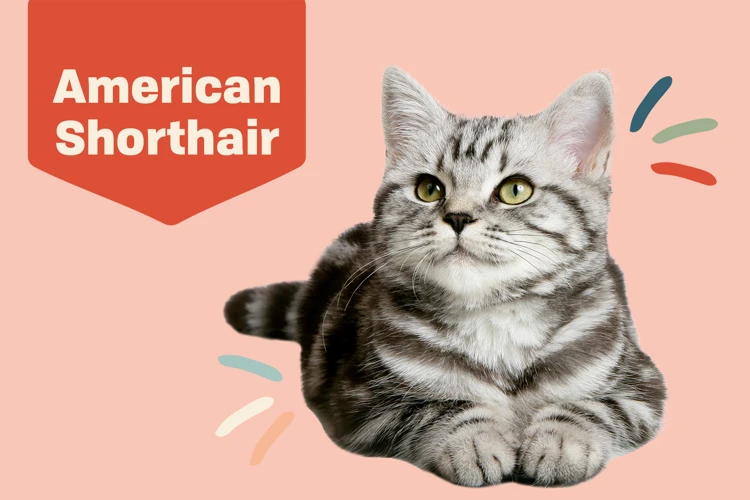
As a loving cat owner, you want to ensure your furry friend is healthy and happy. One important aspect of your American Shorthair’s health is maintaining a healthy weight. But why is weight management so important for your cat? In this section, we’ll explore the health risks associated with obesity in cats and the benefits of helping your American Shorthair lose weight. By understanding the importance of weight management, you’ll be motivated to take steps towards providing your cat with a happier and healthier life. (For more information regarding weight management, check out our portion control guide for American Shorthairs.)
Health risks associated with obesity in cats
When cats are overweight or obese, they are at risk of developing a number of health problems that can significantly shorten their life span. Here are some of the health risks associated with obesity in cats:
- Type 2 diabetes: When a cat is overweight, its body becomes resistant to insulin, which can eventually lead to the development of type 2 diabetes.
- Arthritis: Excess weight puts additional pressure on a cat’s joints, which can lead to joint damage and painful arthritis.
- Heart disease: Obesity in cats has been linked to an increased risk of heart disease, including hypertrophic cardiomyopathy.
- Respiratory problems: Overweight cats may struggle to breathe and may be predisposed to developing conditions such as asthma.
- High blood pressure: Obese cats may be more likely to develop high blood pressure, which can lead to a variety of health issues including kidney disease and blindness.
- Urinary tract problems: Cats that are overweight are more prone to developing urinary tract problems, including bladder stones and urinary tract infections.
It’s important to note that obesity doesn’t just affect a cat’s physical health but can also impact their emotional well-being. Overweight cats are often less active and may struggle with depression and lethargy. If you notice any of these symptoms in your American Shorthair, it’s essential to take action to help them achieve a healthy weight. To learn more about the importance of indoor activities for your American Shorthair’s health, you can check out this article.
Benefits of helping your cat lose weight
Maintaining a healthy weight for cats, like American Shorthairs, has several benefits, both in terms of their physical and mental health. An overweight cat can be at risk of several health issues, like diabetes, heart disease, and arthritis, but helping them to lose weight can improve their overall health and well-being.
Aside from health benefits, there are other advantages to helping cats lose weight. Here are some of the benefits of keeping your American Shorthair at a healthy weight:
| Benefits of helping your cat lose weight |
|---|
| Improved Mobility: An overweight cat may find it difficult to move around or jump, but with a healthy weight, they can become more agile and find it easier to play and exercise. |
| Increased energy: Carrying extra weight around can be draining for cats, and they may feel lethargic or tired. By losing weight, they can boost their energy levels and become more active. |
| Better mental health: Obesity can have a negative impact on cats’ mental health. They may become less active, withdrawn, or depressed. A healthy weight and active lifestyle can help to improve their mood and reduce stress. |
| Reduced risk of health problems: Obesity can lead to many health issues, such as diabetes, heart disease, and arthritis. By maintaining your cat’s healthy weight, you can help to reduce these risks. |
| Longer lifespan: Maintaining a healthy weight can help to extend a cat’s life by reducing the risk of obesity-related health issues. |
If you are interested in learning more about the risks of obesity and the benefits of weight management for your American Shorthair, check out our informative articles on obesity-related health issues and the role of exercise for weight management. Also, healthy treats and dietary choices can play an important role in your American Shorthair’s weight loss journey.
How to tell if your American Shorthair is overweight
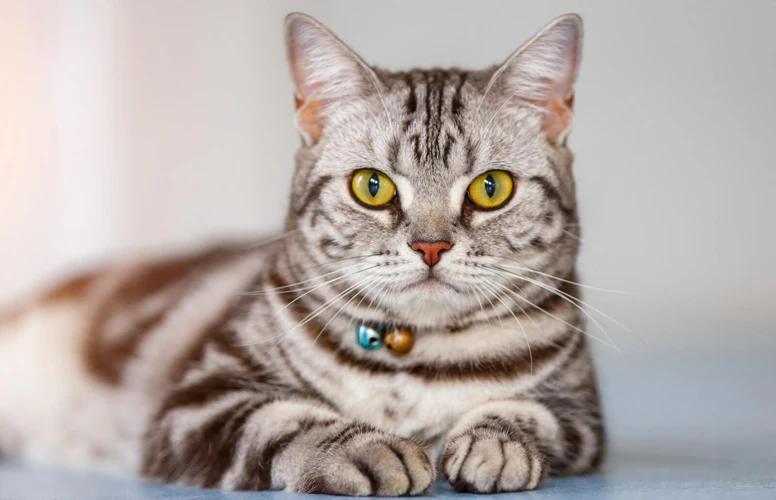
As a loving pet owner, you want to make sure your American Shorthair is healthy and happy. One of the most important aspects of your cat’s health is maintaining a healthy weight. But, how can you tell if your feline friend is carrying some extra pounds? There are some physical signs and body condition score tests that can help you identify whether your cat needs to shed a few pounds. Let’s explore them further below. If you want to learn more about understanding your cat’s body condition score, check out our comprehensive guide.
Physical signs to look for
When it comes to determining if your American Shorthair is overweight, there are several physical signs to look for. Here is a list of potential physical signs that may indicate your cat is carrying excess weight:
- Bulging sides: when looking down at your cat, you may notice that their sides bulge out instead of remaining parallel to the floor.
- Lack of an obvious waist: when looking at your cat from above, there may be little to no definition of their waistline.
- Sagging belly: excess weight can cause a sagging belly that hangs down towards the floor.
- Difficulty grooming: overweight cats may experience difficulty reaching certain areas of their body, causing matting and unkempt fur.
- Changing shape: as your cat gains weight, their shape and posture may change, becoming rounder and less agile.
- Difficulty jumping and climbing: due to extra weight, your cat may struggle to jump up onto surfaces or climb stairs and cat trees.
- Shortness of breath: carrying extra weight can put a strain on your cat’s respiratory system, causing them to pant or breathe heavily after mild exercise.
- Excess fat deposits: you may notice pockets of fat around your cat’s hips, neck, and base of the tail.
Keep in mind that not all American Shorthairs carry weight in the same way, and some cats may not exhibit all of these physical signs. It’s important to consult with your veterinarian to determine if your cat is at a healthy weight and to create a plan for weight loss if needed.
Weighing your cat
Weighing your cat
In order to determine if your American Shorthair is overweight, it’s important to weigh them regularly. Here are a few tips for weighing your cat at home:
- Use a pet scale: Invest in a pet scale to make weighing your cat easy and accurate. These scales are designed specifically for weighing pets and provide a stable platform for your cat to stand on.
- Weigh yourself first: If you don’t have access to a pet scale, weigh yourself first and then weigh yourself holding your cat. Subtract your weight from the combined weight to find your cat’s weight.
- Record the weight: Keep track of your cat’s weight over time by recording it in a journal or spreadsheet. This can help you track their progress as you work to help them lose weight.
It’s important to remember that weight isn’t the only indicator of whether your cat is at a healthy weight. You should also pay attention to their body condition score, as a cat can have a healthy weight but still have excess fat. Use a body condition scoring chart to assess your cat’s overall body composition.
Tips for helping your American Shorthair lose weight
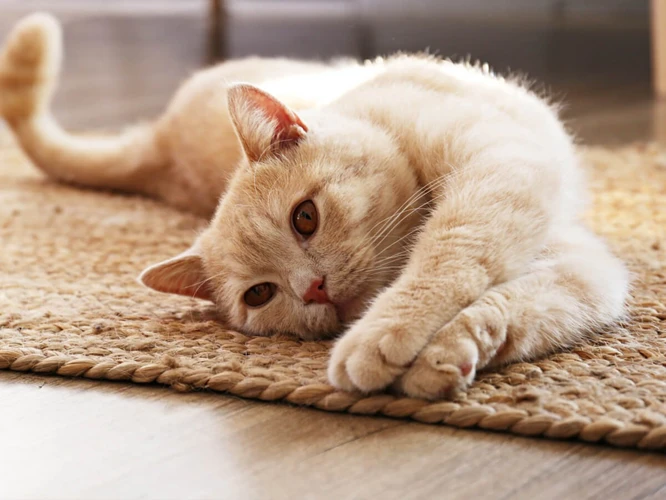
Helping your American Shorthair shed some extra pounds can be a challenging task. Obesity in cats is a common and serious health issue that can lead to various health complications. However, with some simple changes to their diet and exercise routine, your feline friend can achieve a healthier weight and improve their overall health. In this section, we will discuss some useful tips and strategies that you can adopt to help your American Shorthair lose weight safely and effectively.
Dietary changes
One of the most effective ways to help your American Shorthair lose weight is through dietary changes. Here are some tips to help your cat achieve a healthier diet:
- Portion control: Start by measuring out your cat’s food to ensure that they are not overeating. Use a measuring cup or scale to determine the appropriate portion size based on your cat’s weight and calorie requirements. It’s important to follow feeding instructions on the cat food package and to avoid overfeeding treats.
- Switch to high-protein, low-carbohydrate food: American Shorthair cats are obligate carnivores, which means they require a diet high in protein. Consider switching to a high-quality, grain-free cat food that includes real meat as the first ingredient. These kinds of food are higher in protein and lower in carbohydrates which are often found in cheap cat food brands.
- Incorporate more wet food: Wet food has a higher water content than dry food, which can help your cat feel more full while consuming fewer calories. Consider incorporating more wet food into your cat’s diet to help aid in weight loss.
- Avoid free-feeding: Free-feeding – leaving a bowl full of food out for your cat to graze on – can result in overeating. Instead, try feeding your cat smaller meals throughout the day to keep them satiated and prevent them from overeating.
- Consider weight loss cat food: Some cat food brands offer foods specifically formulated for weight loss. These foods generally contain fewer calories and higher levels of fiber to help your cat feel full without overeating. Speak with your veterinarian to find the right weight loss food for your cat’s needs.
Remember, it’s important to make dietary changes gradually to avoid upsetting your cat’s digestive system, and to work with your veterinarian to determine the appropriate calorie intake and weight loss goals for your American Shorthair. By following these dietary tips, you can help your cat achieve a healthier weight and overall well-being.
Increasing exercise and activity
When it comes to helping your American Shorthair lose weight, a key factor is increasing their exercise and overall activity levels. Here are some tips and ideas to help you get started:
1. Playtime: Set aside dedicated playtime with interactive toys such as wand toys or crinkly balls. This is not only a great way to increase their physical activity but also provides mental stimulation for your cat.
2. Cat Trees and Scratching Posts: Invest in a cat tree or scratching post to encourage your cat to climb and scratch, which can help burn off excess calories.
3. Walking on a Leash: Believe it or not, some cats can be trained to walk on a leash! Get them used to wearing a harness first, and then start with short walks around the block.
4. Laser Pointers: As controversial as they may be, laser pointers can be a fun and engaging way to get your cat moving. Just make sure not to shine the laser directly in their eyes.
5. Puzzle Feeders: Feeding your cat using puzzle feeders can make meals more stimulating, and can also help reduce boredom-related overeating.
Here is a table summarizing these exercise and activity ideas:
| # | Idea |
|---|---|
| 1 | Playtime with interactive toys |
| 2 | Invest in a cat tree or scratching post |
| 3 | Walking on a leash |
| 4 | Using laser pointers |
| 5 | Feeding with puzzle feeders |
By incorporating these ideas into your American Shorthair’s daily routine, you’ll be helping to increase their physical activity level and promote weight loss. Remember to consult with your vet before starting any new exercise routines or dietary changes.
Additional supplements and treatments
If your American Shorthair is struggling to lose weight through dietary changes and exercise, additional supplements and treatments may be necessary. However, it is important to consult with your veterinarian before adding any supplements or treatments to your cat’s weight loss plan.
Here are some additional supplements and treatments that may be helpful:
| Treatment | Description |
|---|---|
| Prescription weight loss food | A special type of cat food available only through veterinarians that is designed to help cats lose weight. It is low in calories but high in fiber and protein to keep cats feeling full. |
| Metabolic supplements | These supplements can help boost your cat’s metabolism and aid in weight loss. They may include ingredients like green tea extract or L-carnitine. |
| Acupuncture | This ancient Chinese practice involves inserting thin needles into specific points on the body to stimulate energy flow and promote healing. It has been used to aid in weight loss for both humans and pets. |
| Holistic remedies | Natural remedies like herbs and essential oils may be effective in promoting weight loss and reducing stress in cats. However, it is important to talk to your veterinarian before using any holistic remedies. |
Remember, supplements and treatments should never replace a healthy diet and regular exercise. They should only be used as a complement to your cat’s weight loss plan, under the guidance of your veterinarian.
Creating a long-term weight management plan for your American Shorthair
As with any successful weight loss program, creating a long-term weight management plan for your American Shorthair requires dedication and commitment. It can be a challenge to maintain a healthy weight for your furry feline, but it’s important for their overall health and well-being. In this section, we’ll explore some strategies for setting goals, tracking progress and maintaining weight loss for your American Shorthair. By implementing these techniques, you can help your cat achieve and maintain a healthy weight for years to come.
Setting goals and tracking progress
Setting goals and tracking progress is crucial for any successful weight loss program, and that goes for cats, too! Setting achievable goals will help you and your American Shorthair stay on track and see progress. A useful way to set goals is to determine a target weight and create a timeline to reach it.
To track your cat’s progress, create a chart or spreadsheet to record weekly weigh-ins. You can use a table in HTML to easily organize the data. Below is an example of what your chart could look like:
| Week | Weight (lbs) | Percentage of Body Weight Lost |
|---|---|---|
| 1 | 12 | 0 |
| 2 | 11.8 | 1.67% |
| 3 | 11.5 | 3.33% |
| 4 | 11.2 | 5% |
It’s important to remember that healthy weight loss for cats is usually only about half a pound per month. So while you may not see dramatic results right away, stick to the plan and continue tracking progress. Celebrate small milestones along the way to stay motivated and hopeful.
It’s also important to consult with your veterinarian throughout the weight loss journey. They can help you monitor your cat’s progress and make adjustments to the plan as necessary. With dedication and patience, you can help your American Shorthair reach and maintain a healthy weight for years to come.
Maintaining weight loss
Maintaining weight loss in your American Shorthair is just as important as achieving it. Here are some tips for keeping your cat at a healthy weight:
- Stick to a routine: Cats thrive on routine, so try to keep feeding and exercise times consistent.
- Monitor progress: Weigh your cat regularly and track their progress. If you notice any significant weight gain, adjust their diet and exercise routine accordingly.
- Continue healthy habits: Continue to feed your cat a balanced diet and encourage regular exercise and activity.
- Limit treats: Treats should make up no more than 10% of your cat’s daily calorie intake. Stick to healthy options like low-fat protein or vegetables.
- Consult with your vet: Your veterinarian can help you create a long-term weight management plan and provide any necessary guidance or resources.
Remember, maintaining a healthy weight is a lifelong commitment. By staying consistent, monitoring progress, and continuing healthy habits, you can help prevent your American Shorthair from developing weight-related health issues.
Preventing future weight gain
After successfully helping your American Shorthair lose weight, it’s important to take preventative measures to avoid future weight gain. Here are some tips for preventing your feline friend from returning to an unhealthy weight:
- Monitor their food intake: Continue to measure the amount of food your cat is eating and make sure it aligns with their recommended daily caloric intake. Avoid free-feeding and stick to a regular feeding schedule.
- Choose low-calorie treats: Treats are an important part of bonding with your cat, but it’s important to choose low-calorie options. Avoid treats high in fat or sugar, and instead opt for healthy alternatives such as small pieces of vegetables or lean meats.
- Encourage exercise: Keep your American Shorthair active by providing opportunities for play and exercise. This can include using interactive toys, having play sessions with your cat, or setting up a stimulating environment for them to explore.
- Regularly visit the veterinarian: Regular check-ups with your veterinarian can help catch any underlying health issues or weight fluctuations early. Your vet can also assist you in adjusting your cat’s diet or exercise routine as needed.
By following these preventative measures, you can help ensure your American Shorthair stays at a healthy weight and continues to live a long, happy life. Remember, weight management for cats is a lifelong commitment, so continue to monitor and adjust as needed.
Conclusion
As pet owners, we all want our furry friends to live long and healthy lives. When it comes to our American Shorthairs, maintaining a healthy weight is essential in achieving this goal. With the tips and strategies outlined in this article, you can help your cat shed those extra pounds and improve their overall well-being. Remember, weight loss is a journey, not a destination. Be patient, stay committed, and always consult with your veterinarian before making any significant changes to your cat’s diet or exercise routine. Good luck on your weight loss journey with your American Shorthair!
Final thoughts
As a cat owner, it is important to remember that maintaining a healthy weight for your American Shorthair is a crucial aspect of their overall health and wellbeing. By implementing a balanced diet, regular exercise, and a long-term weight management plan, you can help your furry friend live a long and healthy life. Here are a few final tips to keep in mind:
| Regular veterinary check-ups: | Make sure to schedule regular check-ups with your veterinarian to monitor your cat’s weight and overall health. Your vet can also provide guidance on the best dietary plan and exercise regimen for your cat. |
| Be patient: | Weight loss takes time, so don’t be discouraged if you don’t see immediate results. Stick with your weight management plan, and you will see progress over time. |
| Stay consistent: | Consistency is key when it comes to helping your cat lose weight. Stick to a regular feeding and exercise schedule, and don’t give in to your cat’s demands for more food or treats. |
| Celebrate small victories: | As your cat loses weight and becomes more active, celebrate their progress and achievements. This can help keep you motivated and inspired to continue on your weight management journey. |
Remember, helping your American Shorthair lose weight is a journey, not a destination. By making small changes to their diet and exercise routine over time, you can help them achieve and maintain a healthy weight for years to come. If you need additional guidance on your cat’s weight loss journey, be sure to consult with your veterinarian or a feline nutritionist for further support and advice.
Additional resources for helping your American Shorthair lose weight
Here are some further resources that can help you in your mission to help your American Shorthair achieve and maintain a healthy weight:
- Cat food brands: Choosing a quality cat food brand can make a big difference in your cat’s weight management. Look for brands that use real meat as the primary ingredient and avoid those with excessive fillers or additives such as grains, corn or soy. Examples of high-quality cat food brands include Blue Buffalo, Merrick and Wellness.
- Vet appointments: Regular check-ups with your veterinarian can help keep track of your cat’s health and weight. Your vet can also provide recommendations on specific dietary needs and exercise routines for your American Shorthair.
- Interactive toys: Keeping your cat active and entertained is essential to maintaining a healthy weight. Interactive toys such as feather wands, treat-dispensing balls and puzzle feeders can provide plenty of mental and physical stimulation for your feline friend.
- Weight loss apps: There are various weight loss apps available that you can use to track your cat’s progress. These apps can help you keep track of your cat’s weight, exercise routine, and dietary intake. Some popular options include PetCoach and PetFirst-Aid.
- Social media groups: Joining online communities where fellow cat owners share their experiences in keeping their American Shorthairs healthy and happy can be helpful. You can learn from others, get support and ideas, and stay motivated. Facebook groups such as American Shorthair Lovers and Catster Community can be excellent resources.
Remember that every cat is different, and it may take some trial and error to figure out the most effective strategy to help your American Shorthair lose weight. Be patient and persistent, and don’t hesitate to seek advice from a veterinarian or pet nutritionist if you need help along the way.
Frequently Asked Questions
1. How much should I be feeding my American Shorthair?
It’s important to follow feeding guidelines based on your cat’s age, weight, and activity level. Speak to your veterinarian for recommended portions and feeding schedule.
2. Can treats still be a part of my American Shorthair’s diet while they are trying to lose weight?
Yes, treats can be given in moderation and as a reward for good behavior. Look for low-calorie options and limit the number given per day.
3. How often should I weigh my cat?
It’s recommended to weigh your cat every 2-4 weeks during their weight loss journey. This will allow you to track progress and make any necessary adjustments to their diet and exercise routine.
4. Is it safe to put my American Shorthair on an extreme low-calorie diet?
No, extreme low-calorie diets can lead to malnutrition and other health issues. It’s important to work with your veterinarian to create a safe and balanced diet plan for your cat’s weight loss journey.
5. Can I continue to free-feed my American Shorthair?
No, free-feeding can lead to overeating and weight gain. It’s recommended to portion out meals and limit the amount of food available to your cat throughout the day.
6. Should I include wet or dry food in my American Shorthair’s diet?
Both wet and dry food can be incorporated into your cat’s diet. However, wet food tends to be lower in calories and can aid in weight loss efforts.
7. Can exercise alone help my American Shorthair lose weight?
No, exercise alone typically isn’t enough to facilitate weight loss in cats. It’s important to also make changes to their diet and feeding schedule.
8. Are there any health risks associated with rapid weight loss in cats?
Yes, rapid weight loss can lead to serious health issues, including hepatic lipidosis. It’s important to work with your veterinarian to create a safe and realistic weight loss plan for your cat.
9. How can I encourage my American Shorthair to be more active?
Try incorporating more playtime into your cat’s daily routine and providing toys that encourage activity. You can also consider investing in a cat tree or other climbing structures for your cat to explore.
10. Are there any supplements that can aid in my cat’s weight loss?
There are supplements on the market that claim to aid in weight loss, but it’s important to speak to your veterinarian before adding any supplements to your cat’s diet. Some supplements may interact with medications or be harmful to your cat’s health.

